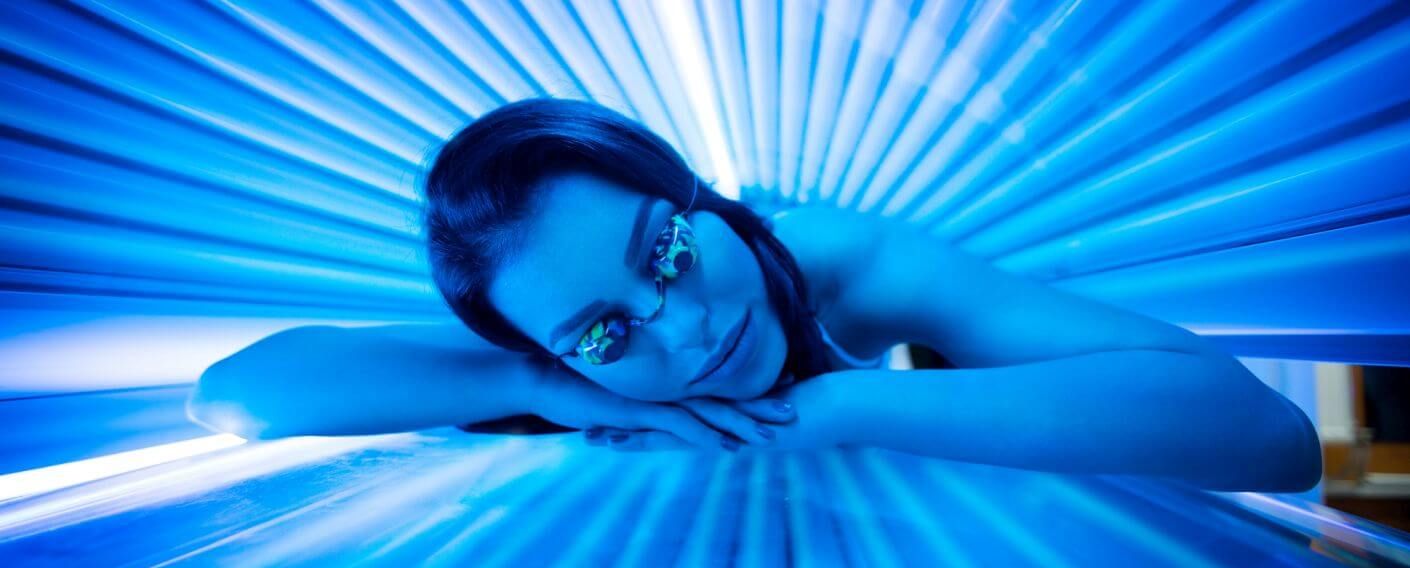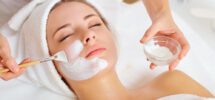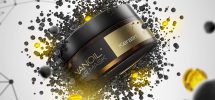Do you visit solarium often? Honestly, I do. Is indoor tanning safe? Honestly, no. How to minimize the risk that each visit in solarium triggers? Well, I follow a few simple solarium bed use rules. However, before providing you with them, I believe that I should tell you this and that about indoor tanning. Are there any contraindications of using solarium beds?
Pluses and minuses of using solarium beds
The tanning lamps that sunbeds feature mostly emits UVA rays and a minimal amount of UVB rays. UVA radiation appears to be more hazardous for our bodies because it penetrates through the skin and reaches deep skin layers where it destroys collagen and elastin fibers. Additionally, this type of light accelerates development of free radicals and may cause cancer. Sounds bad?
On the flip side, indoor tanning has its advantages. For example, it stimulates our body to produce vitamin D3, and what is strictly connected with this, it boosts our mood and helps combat depression. Obviously, the most favorable effect of using solarium beds is the tanned skin that adds charm to each one of us.
My most important solarium bed use rules
- I consult a physician
Every time I return to indoor tanning – because I sometimes make short breaks – I visit a physician to let them examine my body. I ask them whether the cosmetics I use or medication that I take daily cause any contraindications of exposing my body to tanning lamps. If you ask the physician to give you the full insight into the risks that this form of tanning entails, I’m sure that s/he will be more than happy to provide you with the essential info (e.g. the physician will tell you how to reduce the adverse effects of indoor tanning). Another thing that I need to tell you – treat it as a form of precaution – is that moles, dark marks on skin and warts mustn’t be exposed to tanning (no matter if indoor or outdoor). Therefore, if your body features some of them, consult a dermatologist before laying your body on a solarium bed. - I check the condition of solarium bed
I visit salons that are equipped with solarium beds made by Ergoline, Philips or Golf – they undergo regular check-ups, so-called Product Assurance and Safety measurements and tests, so a to prevent the beds from malfunctioning. Before I start tanning, I check whether the bed is clean and disinfected, whether the ventilation works and if I’m able to switch off the lamps responsible for tanning face. I find this aspect really important because my face skin is delicate, therefore in most cases I don’t want to expose it to any type of radiation. Also, I think that it’s a good idea to check the lamp lifetime. And by saying that I mean that you should check how many hours the lamps have been working for so far. To clarify, throughout the first 80 hours the tanning lamps produce too intensive light, therefore you should reduce the time devoted to tanning. On the other hand, when they have been working for over 800 hours, they are no longer effective. Finally, if the salon is equipped with turbo solarium beds, you should reduce tanning time twice. - I set the exposition time to tanning lamps so it matches with my skin phototype
In the case of really pale skin, freckles and blonde/ginger hair, it’d be better for you to resign from using solarium beds completely. If your skin is pale and sometimes feature freckles and if the hair is auburn, you can expose your body to tanning lamps but do this wisely. Start with 5 minutes only, and then you can extend it to 10-minute exposition. However, if you describe the complexion as dusky and your hair is either auburn or dark, you can keep tanning for no more than 20 minutes. Of course, a few first sessions should last approximately 10 minutes. - I never exceed the recommended tanning time
Is there any recommended tanning time (in general, not only in solarium)? Well, the specialists say that you shouldn’t expose your body to rays for more than 10 hours per year. If you’re just about to begin the tanning adventure, then keep visiting a solarium every 2-3 days for 10 days maximum. Then, tan once a week. Also, every 2-3 months make a 4-week break. Also, make sure that you don’t mix to indoor and outdoor tanning. It’s worth realizing that such combination speeds up skin ageing processes. - I protect my eyes
Before putting my body in a solarium bed, I apply special protecting glasses because radiation damages eyes. When it comes to my lips, I coat them with a special balm with high SPF. Now, I remove jewellery and makeup. Also, it’s a really bad idea to use deodorant or perfumes prior to tanning – such products might cause allergic reaction and permanent skin discoloration. - I moisturize my body from the inside and outside
Our body sweats heavily during tanning therefore after each indoor tanning session I drink at least one liter of mineral water that helps to balance electrolyte level in my body. Then I apply a moisturizer that contains substances responsible for fighting off free radicals (e.g. vitamin E and C), algae and ceramides. I use only well-known brands because only such beauty products facilitate rebuilding the natural hydro-lipid barrier of epidermis.
Contraindications of using sunbeds
You should resign from indoor tanning in the case of:
- pregnancy or postpartum period (you must wait at least 2 months from giving birth to a child),
- sun allergy,
- cardiac diseases, thyroid gland and kidney disorders, albinism, hypertension, epilepsy, psoriasis, herpes, rosacea and diabetes,
- fresh wounds and skin cuts (e.g. caused by a surgery),
- tendency to broken capillaries,
- taking or applying photosensitive medications/cosmetics,
- recent hair removal or skin exfoliation,
- using products containing retinol or AHA.
Do you visit solarium regularly? If so, what are your ways of keeping yourself safe during tanning session?



